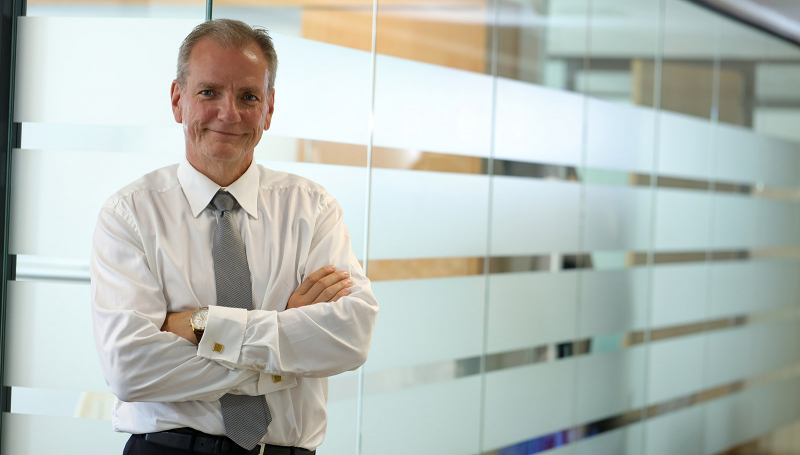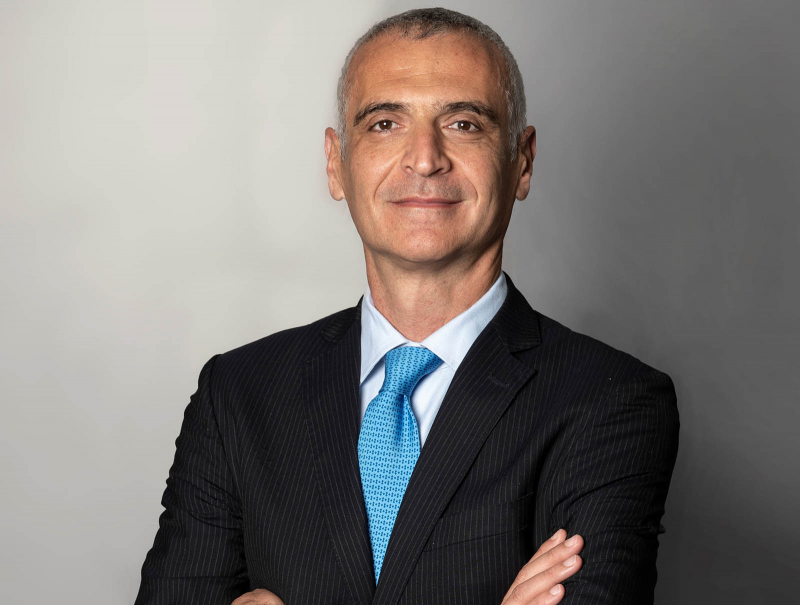Future
Destination: the Europe of tomorrow
The Secretary General of ASD and the CEO of Avio Aero discuss the Destination 2050 report and outline the decarbonization targets for the European aeronautical sector.
Apr 2021
The impact of air traffic on the total CO2 emissions released into the atmosphere all over the world is between 2 and 3% (among means of transport, its share is 12%) and, specifically, 4% on the European continent. In the decade between 2009 and 2019, the aviation industry’s fuel efficiency efforts have resulted in a progressive improvement of 2% on average.
A significant pace, but more needs to be done. The European Union’s Green Deal sets the target of zero CO2 emissions by 2050. Such ambitious target is also the goal of ASD (AeroSpace and Defence Industries Association of Europe) as specifically stated in Destination 2050 - a report published on February 11st by ASD along with the European aviation sector - according to which civil air transport figures in Europe are expected to increase by 1.4% every year until 2050 (i.e. totally 40 times the current volumes), making the challenge even more difficult.
“The current crisis is bigger and broader than anything we have ever faced before. When discussing a return to pre-Covid flight levels, we must not forget that the main drive for the global aviation industry was not set on those levels, but on annual growth forecasts of around 4-5% for the next few decades and a plentiful order book, as well as the financial stability and predictability needed to invest heavily in the green transition,” says Jan Pie, Secretary General of the ASD Industries Association of Europe.
The Destination 2050 report, “A Route to net zero European Aviation”, outlines the European aviation sector’s commitment to achieve net zero CO2 emissions by 2050 and reduce such emissions by 45% by 2030. The report demonstrates how a combination of four key measures could lead to substantial emissions reductions in line with the EU’s climate targets. Specifically, the developments and improvements in aircraft and engine technology would contribute to the 2050 reduction target by 37%, the use of SAF (Sustainable Aviation Fuels) would count for 34%, the implementation of policies and economic incentives for 8%, and, finally, the optimization of air traffic management operations for 6%.
It is crucial to ensure that European industry emerges from the crisis without losing any competitive advantage in the global competitive landscape: the support of the EU must be equal to the support that other regions of the world are getting
Jan Pie continues by saying “it is crucial to ensure that European industry emerges from the crisis without losing any competitive advantage in the global competitive landscape. This means that the support of the EU and its Member States must be equal to the support that other regions of the rest of the world are getting.”
According to the Secretary General of the ASD, sustainability plays a key role in the recovery of the sector. It is his firm conviction that “safety is the license to exist for aviation and keeping the environmental footprint under control will be the license to grow. If aviation is not able to transform itself to become fully environmentally sustainable, then policy measures will certainly emerge to limit the growth of the industry.”
Jan Pie, while very blunt, is equally aware of how much aviation leaders believe in this transformation: “they really care about the climate issue, just as the new generations of customers and industry professionals do”. This awareness, for Jan Pie, could turn into a competitive advantage for the European sector, which shows itself to be effectively involved and committed to the Green Deal, as well as to the Destination 2050 objectives and the technological, infrastructural development programs.
“Innovative companies like Avio Aero are key to reaching the 2050 milestone. Their contribution in developing new technologies to reduce fuel consumption and CO2 emissions through lighter engines and optimized performance aligns with the industry’s R&D, design, and manufacturing efforts in Europe. Avio Aero can play a significant role in Green Transformation in the prevailing European leadership,” says Jan Pie.
The Secretary General of ASD knows Avio Aero very well, both because the company supports ASD and because he has shared directly with the CEO and General Manager Riccardo Procacci some ideas and visions. “Our journey towards the sustainability of aeronautics began more than ten years ago, as evidenced by our participation in European programs such as Horizon 2020, Clean Sky, and more recently the signing of the European SRIA document (Strategic Research and Innovation Agenda, ed.)”, says Procacci.
The CEO of Avio Aero also underlines how the company has built and fostered the growth of collaboration networks for technological innovation. “The network of collaborations with universities and research centers has been a solid reality for Avio Aero in Italy for several years, and its European expansion within Technology Development Communities in 2020 was a natural evolution,” continues Procacci. “The work and investments of these past few years have led us to become system integrators, as well as continuing to specialize and excel in the integration of new architectures and advanced technologies (such as additive manufacturing) into aircraft engines.”
In addition to the airlines, industry, airports, and service providers in the sector believing in and being fully committed to meeting targets, Jan Pie emphasizes the level of coordination and political leadership. “Only institutions can ensure that policies, regulations, infrastructure investments, and research programs are up to the challenge, focused on results and consistent with what can be achieved technologically. We need the EU to lead a Pact for Sustainable Aviation and for it to be supported by its Member States in this endeavor. Link-ups and interaction between what is happening in Europe and the rest of the world will also be crucial.”
This simply means, according to ASD’s Secretary General, that the European industry must develop solutions according to Europe’s requirements and share them globally. “In this context, as in many others, the role of the ICAO is once again crucial,” adds Pie.
The work and investments have led us to become system integrators, as well as continuing to specialize and excel in the integration of new architectures and advanced technologies, like additive manufacturing, into aircraft engines
Riccardo Procacci completely upholds this position, corroborated by the conviction of the President of the Italian Council that there can be no recovery without it being reconciled with environmental and social wellbeing. “The policies that we strongly need are those that mitigate environmental impact without depressing the industry,” explains the CEO of Avio Aero. “This aspect is central to the Green Deal: stimulating innovation that creates multi-directional benefits is the political vision that we embrace the most.”
The various types of technological innovations for aviation propulsion all serve the common cause of the industry according to the ASD. “Most engines, including yours, can for example already use 100% SAF on paper, but the actual mixture levels are still very low,” says Jan Pie. “Political, regulatory, and infrastructural measures will make the difference here as well. I’m also thinking of electric propulsion or hybrid-electric propulsion, where there is still a lot to do, but which could be a very interesting solution in the short to medium term, or in the long term in certain geographical areas. Hydrogen will come into play for long journeys: future hydrogen planes will even be able to generate electricity to power their own electric engines. All these technologies will be implemented over time when they provide security, infrastructure solutions, reliability, and financial sustainability. Some are developing faster than others, yet all are necessary to achieve our common goal.”
Avio Aero is already working hard and, in some cases, able to demonstrate the effectiveness of such technological innovations and propulsion solutions, as Riccardo Procacci concludes. “We have several demonstrators with very encouraging results in the context of Clean Sky, and we are working with our partners (engine and aircraft manufacturers) to continue Clean Aviation for the technological development of engines that will equip medium-range aircraft and will be capable of achieving intermediate, but decisive, reduction targets, such as reducing CO2 emissions by 20% by 2035”.
Cover image credits: © Airbus 2020 - all rights reserved IIVS







